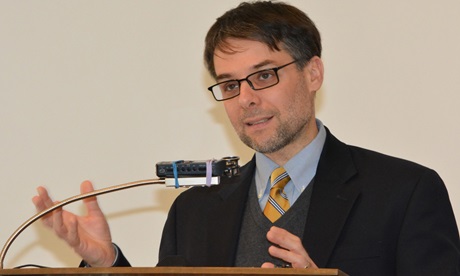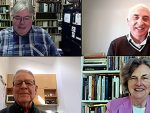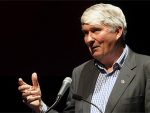In the same month of July, in the two countries I spend most of my time and I know best, the United States and Italy, Catholics held important national gatherings.
Looking at them from a distance, not as an active participant, but knowing personally or professionally many of the speakers, has been an instructive experience which says a lot about the very different trajectories that two important churches in global Catholicism are taking.
The Italian gathering
On July 3-7, the Italian northeastern port city of Trieste hosted the “Social Weeks of Italian Catholics.”
The first edition took place in Pistoia (Tuscany) in 1907, one of the landmark events in the history of the Catholic social movement, which responded to the call of Leo XIII in Rerum Novarum (1891) to engage in social and economic questions created by modernity as well as capitalism and Communism.
They were organised by lay Catholics in collaboration with the bishops under the Vatican’s watch and celebrated every few years in the last century, with two long suspensions.
These were during the Fascist regime and in the 1970s–1980s before they resumed in 1991, also thanks to the impulse given by St. John Paul II for a renewed energetic engagement of the institutional church in the public square.
At the heart of democracy
This year’s meeting was titled “At the heart of democracy” (“Al cuore della democrazia”) and presented a series of talks, seminars, and workshops on the role and responsibilities of Catholics in the present crisis of our democratic systems.
The president of the Italian bishops’ conference, Cardinal Matteo Zuppi of Bologna, Italian President Sergio Mattarella, and Pope Francis were all in Trieste and spoke on the value of democracy, constitutionalism, and the Catholic view of migrants and refugees.
Public sessions were held by recognized experts in ecology, education, the justice system, artificial Intelligence, poverty, and the welfare state.
But there were also biblical lectures, and every day started with the celebration of Mass.
The congress concluded July 7 with a Eucharistic concelebration in the city’s main square in the Pope’s presence. The event kept Francis’ emphasis on social Catholicism very much in mind.
Earlier in the day, the Pope delivered a powerful speech on the relationship between the church in Italy and democracy, in which he said:
“In Italy, the democratic system matured after World War II, also thanks to the decisive contribution of Catholics. You can be proud of this history.”
Francis also reminded Italian Catholics of the political nature of their faith:
“As Catholics, we cannot be satisfied with a marginal or private faith. This means not so much being listened to but, above all, having the courage to make proposals for justice and peace in the public debate.
“We have something to say but not to defend privileges. No. We must be a voice; a voice that denounces and proposes in an often voiceless society where too many have no voice.”
The US gathering
A different kind of Catholicism is on display at the July 17-21 National Eucharistic Congress organised by the US bishops’ conference in Indianapolis.
As part of the “Eucharistic Revival” that started in 2022, it is also a response to the reported crisis of faith in the “real presence,” but also a follow-up to the failed attempt (thwarted by the Vatican in 2021) by some hardline US bishops to politicise the Eucharist.
The Indianapolis congress represents a very different style of ecclesial event: not only because of the exorbitant costs to participate in a series of sessions that include professionally staged business-like performances.
The programme is a different kind of Catholic show that includes exhibits on the National Shroud of Turin and Eucharistic miracles, prayers for healing, worship with a Christian singer and songwriter in a rock-concert-like gathering, and Eucharistic adoration.
It concludes on the last day with “Family Rosary Across America” and a closing liturgy with the papal delegate, to whom Francis sent a letter in Latin praising the event.
A church open to modernity
Both these two national Catholic events speak about the culture and spirituality of many church members, myself included.
Born in an environment influenced by Vatican II Catholicism that tended to be allergic to traditional devotions, I rediscovered Eucharistic spirituality during my years as an extraordinary Eucharistic minister while serving as a youth minister.
In each and every local church, one finds a lot of both Trieste and Indianapolis in different mixtures: social and devotional Catholicism.
However, these two events also testify to the different directions that institutional Catholicism is taking in two important countries to shape the global church.
Trieste connects the roots of the Church’s social doctrine of the late 19th century with 21st-century challenges: democratic backsliding, new forms of work and social relations, the environmental crisis, and AI.
It’s a Church open to modernity, in a cultural posture that benefits from both Catholic tradition and the Enlightenment, proud of its contribution to the post-war reconstruction of Europe, and still optimistic about the collaboration with non-Catholic and non-religious fellow human beings.
It tries to feed and serve the souls and bodies of Catholics through the mind.
Indianapolis is more about the heart
It’s a mix between traditional Catholic devotionalism and the present mix between dominance of emotions and the media (both old and new).
It’s part of the “clash of emotions,” a further stage, now at the intra-American level, of what political scientist Samuel Huntington called 30 years ago “the clash of civilizations” in the post–Cold War world.
But it’s also another stage in the Americanisation of US Catholicism, a later borrowing phase from American Protestant Evangelicalism’s focus on the heart and sense of re-enchantment for those alienated by modernity.
It encourages experience over reflective thought, the movements of the heart over the life of the mind.
In Indianapolis, the liturgical and devotional emphasis is much stronger, not only because of the very nature of the event, a Eucharistic congress.
It’s a mix of ultra- or post-modern and anti-modern ritual culture, mixing Christian rock and the pre-Vatican II Latin Mass (diplomatically called in the programme “Mass According to the 1962 Missal”).
It’s deeply political by staying away from political issues that divide U.S. Catholics concerning the common good.
Its devotionalism reflects an anti-intellectualism that feeds on the estrangement between devotional Catholicism and the academic elites (including Catholic theologians).
It magnifies the divorce between high culture and organised religion, which has become increasingly attracted to and changed by the media and social media.
It is also an event in which the U.S. bishops invested a lot (not just money) as leaders of a Church that is less affected by Europe because of a lack of clerical and religious vocations.
It is by no means untouched by secularisation.
Still, U.S. Catholicism can count on a spiritual thirst and religious anxiety that is more difficult to find in Europe — at least in the Catholic Church.
It is difficult in the United States to talk about the Eucharistic Revival and the National Eucharistic Congress.
That’s because any criticism is seen as criticism of the Eucharist or of Jesus himself — almost by wrapping into the Body of Christ a “culture war” issue such as access to the sacrament of Catholic Democrats such as President Joe Biden and Nancy Pelosi. But this discussion is for another time.
The big question for Catholicism at both the universal and local levels is how to make them learn the best that each has to offer and collaborate in mission and evangelisation.
What is worth pointing out at this moment, a crossroads both for global Catholicism (the second assembly of the Synod on synodality of October 2024) and the United States (the presidential election of November 5, 2024, where Catholics play an important role), is how different two key churches in the Catholic communion can be.
Both are part of the European-Western world; both have inherited the social and liturgical tradition developed by papal and episcopal teaching; both have been active in the reception and implementation of the Second Vatican Council.
But looking at Trieste and Indianapolis, the impression is of two different churches going in different directions.
It’s more than two different ecclesiastical-institutional systems, different clerical cultures, and different bishops’ conferences.
Trieste and Indianapolis represent the ideal types of two different ecclesial DNAs, reacting differently to the signs of the times.
The big question for Catholics at both the universal and local levels is how to make them learn the best each has to offer and collaborate in mission and evangelisation.
- Massimo Faggioli is an Italian academic, Church historian, professor of theology and religious studies at Villanova University and a columnist for La Croix International.
News category: Analysis and Comment.




